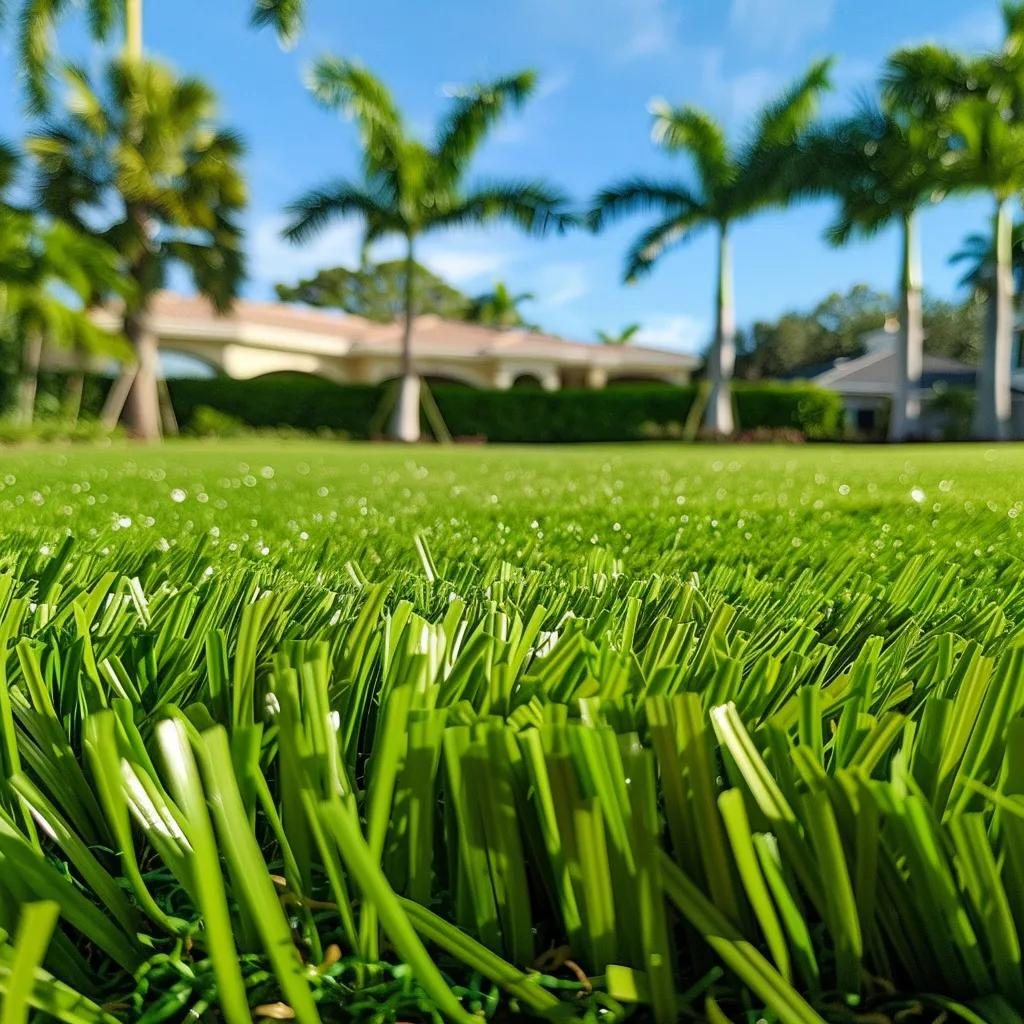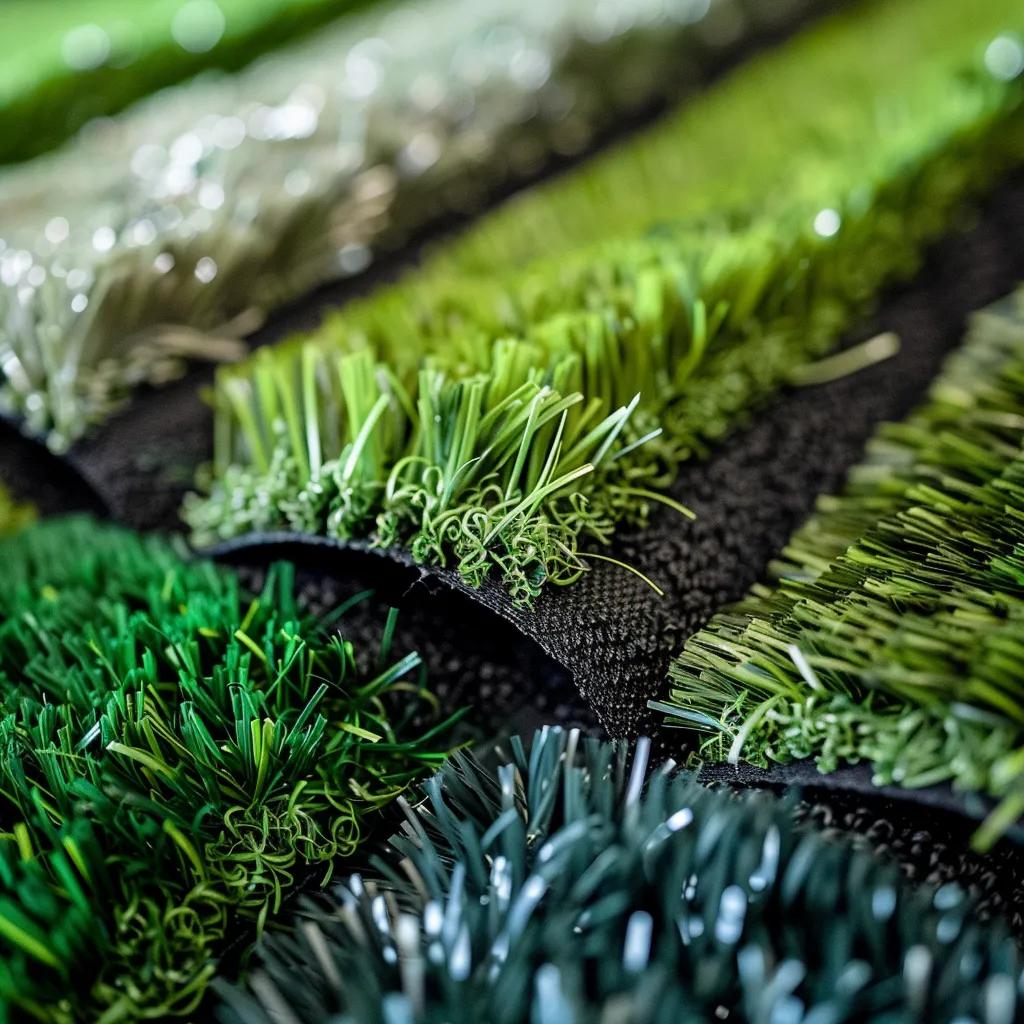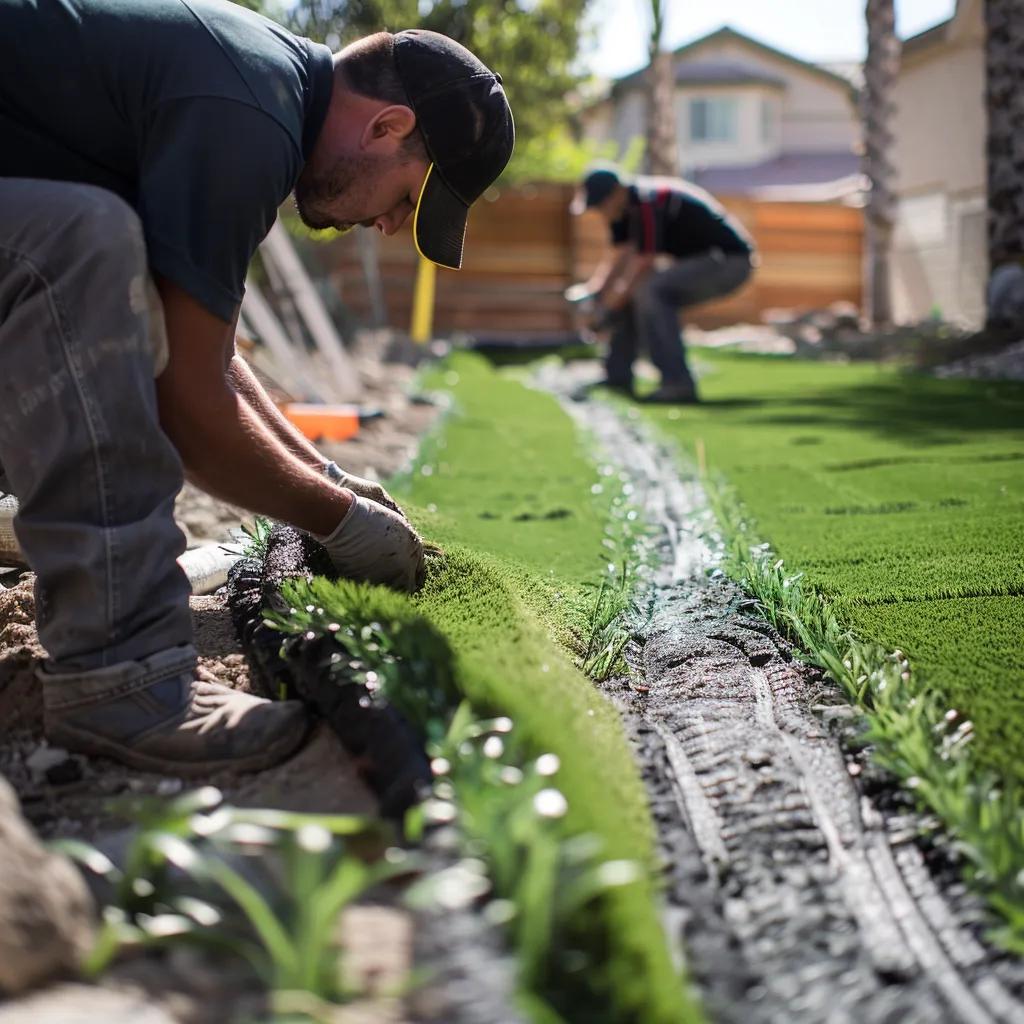
When it comes to artificial turf pricing in Sarasota, several factors come into play, from the type of materials used to the complexity of installation. Whether you're a homeowner, manage a commercial property, run a sports facility, or have pets, understanding these elements can help you make informed decisions. Let’s dive into the five key areas that influence costs:
With over ten years of experience in the Sarasota area, EternaTurf offers precise cost estimates and professional installations tailored to your specific needs.

The cost of materials is a significant factor, driven by the quality and composition of the fibers. High-grade polymers, realistic blade shapes, and dense tufting may require a higher initial investment but promise durability and aesthetic appeal.
Here’s a look at common turf types and their cost ranges:
TypeFeaturesCost per sq ftPolyethylene TurfSoft, UV-resistant$2.50 – $5.00Nylon TurfDurable, heavy-duty$4.00 – $8.00, Polypropylene TurfEconomical, moderate durability$1.50 – $3.50
Opting for higher-grade fibers can be more costly upfront but ensures a longer lifespan and better appearance under Sarasota’s sunny skies.
The choice of material significantly impacts the cost of artificial turf. Polyethylene offers a soft feel and UV stability, nylon is known for its durability, and polypropylene is the budget-friendly option.
Install-It Direct, Artificial Grass Cost in 2025 (2025)
This source corroborates the information on the different types of artificial turf and their costs.
The chemistry of polymers affects pricing due to variations in manufacturing complexity and raw material costs.
Your choice of fiber sets the stage for both initial costs and long-term performance.
Pile height and blade shape affect fiber density, weight, and realism, directly influencing material costs.
Investing in premium designs enhances appearance and wear resistance.
Denser tuft counts (60 – 100 stitches per sq ft) require more yarn and backing, increasing material costs by up to 25%. Durable backings with UV inhibitors add another 5–10%, reducing replacement frequency and preserving value.

Installation costs include labor, site preparation, and drainage solutions. Complex terrains and advanced drainage systems can increase labor hours and materials, impacting the total project cost.
Local labor rates for skilled crews range from $4 to $8 per sq ft, influenced by crew size, project scale, and scheduling demands.
Vertex AI Search, How Much Does Artificial Turf Cost? (2023)
This citation supports the information on labor costs for artificial turf installation.
Efficient scheduling and experienced teams help manage labor costs.
A stable base is crucial for drainage and longevity, but excavation and aggregate layers add to the cost.
TaskDetailsCost per sq ftExcavation & GradingSoil removal, leveling $1.00 – $2.00Crushed Stone Base3 – 4 in layer, compacted$1.50 – $3.00 Geotextile MembraneWeed barrier, separation$0.50 – $1.00
Investing in quality base layers prevents future settling and drainage issues.
Advanced drainage systems for slopes, curves, or high-rainfall areas can increase installation budgets by 10–15%. Complex sites—like those with retaining walls or built-in edging—require custom labor and materials to ensure stability under Sarasota’s heavy rains.
The type of application determines turf selection, infill needs, and installation methods, influencing per-square-foot pricing.
Residential projects typically range from $8 to $15 per sq ft, including materials and labor, while commercial applications—requiring more durable turf and higher traffic warranties—range from $12 to $20 per sq ft.
Pet turf installations average $10 to $18 per sq ft due to antimicrobial infill, reinforced backing, and specialized drainage to resist odors and urine. These features protect investment value and hygiene in pet-friendly environments.
Custom putting greens and play areas range from $20 to $35 per sq ft, considering design contours, shock-absorbent infill, and precision grading for consistent roll or impact safety.
Synthetic grass reduces water usage by eliminating irrigation, translating into monthly utility savings. A robust turf installation offers a clear return on investment through decreased maintenance and extended lifespan.
Artificial turf reduces water usage to zero, saving Sarasota homeowners up to $400 annually on irrigation.
Artificial turf eliminates the need for irrigation, potentially saving Sarasota homeowners up to $400 annually on water bills.
The Complete Guide to Artificial Turf Benefits: Why Synthetic Grass is the Smart Choice in 2025 (2025)
This source supports the claim that artificial turf reduces water usage and can lead to savings on water bills.
Maintenance costs drop by 70–90% as mowing, fertilizing, and pest control become unnecessary.
Quality artificial grass lasts 10–15 years under Florida conditions, backed by 8–12 year warranties on UV stability and fiber retention. Robust warranties exemplify product durability and service confidence.
Return on investment typically occurs within 2–4 years, factoring in water savings, reduced equipment and labor costs, and rebate incentives from local water conservation programs.
Regional climate, regulations, and labor market conditions shape turf selection, preparation requirements, and final pricing for Sarasota installations.
Hot-humid conditions demand UV-stable fibers and antimicrobial backing, adding a 5–10% premium to specialized products that resist heat-induced degradation and microbial growth.
Local water ordinances encourage synthetic grass through rebate programs up to $500 and streamlined permitting, offsetting installation expenses and accelerating payback through utility savings.
Local water ordinances in Sarasota encourage synthetic grass through rebate programs and streamlined permitting.
Sarasota County, Water Restrictions (2022)
This citation supports the information about water restrictions and rebate programs in Sarasota.
Sarasota’s average installation wage of $30 per hour—10–15% above the national average—reflects skilled labor demand and living costs. High seasonal demand can further influence project timelines and rates.
EternaTurf’s local expertise ensures transparent estimates and efficient installations that respect Sarasota’s unique environmental and regulatory landscape.
Installing synthetic grass requires a balance of material quality, skilled installation, and site-specific adaptations. By understanding these cost drivers, property owners can confidently plan budgets and maximize long-term value.
Artificial turf offers several environmental benefits, primarily through water conservation. By eliminating the need for irrigation, homeowners can save significant amounts of water, especially in drought-prone areas like Sarasota. Additionally, synthetic grass reduces the need for chemical fertilizers and pesticides, which can harm local ecosystems. The longevity of artificial turf also means less frequent replacements, reducing waste in landfills. Overall, choosing artificial turf can contribute to a more sustainable landscape while maintaining aesthetic appeal.
The installation process for residential and commercial properties can vary significantly due to scale and usage requirements. Residential installations typically focus on aesthetics and comfort, often involving simpler layouts and fewer materials. In contrast, commercial installations require more durable turf to withstand higher foot traffic and may involve complex drainage systems and custom designs. Labor costs can also differ, as commercial projects often necessitate larger teams and more specialized skills, leading to higher overall expenses.
While artificial turf requires significantly less maintenance than natural grass, some upkeep is still necessary to ensure its longevity and appearance. Regular brushing helps maintain the fibers' upright position and prevents matting. Occasional rinsing with water can remove dust, debris, and pet waste. Additionally, checking for any damage or wear and addressing it promptly can extend the turf's lifespan. Overall, maintenance is minimal compared to natural grass, making it a convenient option for busy homeowners.
Health concerns related to artificial turf primarily revolve around the materials used in its production, particularly the infill. Some older types of infill contained crumb rubber, which raised concerns about potential exposure to harmful chemicals. However, many manufacturers now offer safer alternatives, such as organic or non-toxic infills. It's essential to choose high-quality products from reputable suppliers to mitigate any health risks. Regular maintenance and proper installation also contribute to a safe and healthy environment for users.
When selecting artificial turf, consider factors such as the intended use (residential, commercial, or pet areas), the climate in Sarasota, and the specific features you desire, like UV resistance or drainage capabilities. Additionally, evaluate the pile height, density, and material composition, as these will affect durability and appearance. Budget is also crucial; higher-quality turf may have a higher upfront cost but can offer better long-term value through durability and reduced maintenance needs.
To ensure a successful installation of artificial turf, start by selecting a reputable contractor with experience in your area. Proper site preparation is critical; this includes grading, drainage, and a stable base to prevent future issues. Discuss your specific needs and preferences with the installer to ensure they understand your vision. Finally, consider scheduling the installation during off-peak seasons to potentially reduce costs and ensure that the installation team can dedicate adequate time to your project.
Understanding the true cost of artificial turf in Sarasota empowers property owners to make informed decisions that balance quality and budget. By considering factors such as material types, installation complexity, and long-term savings, you can maximize your investment while enjoying a beautiful, low-maintenance landscape. Explore our expert services at EternaTurf to receive tailored solutions that meet your specific needs. Contact us today to start your journey towards a sustainable and aesthetically pleasing outdoor space today!